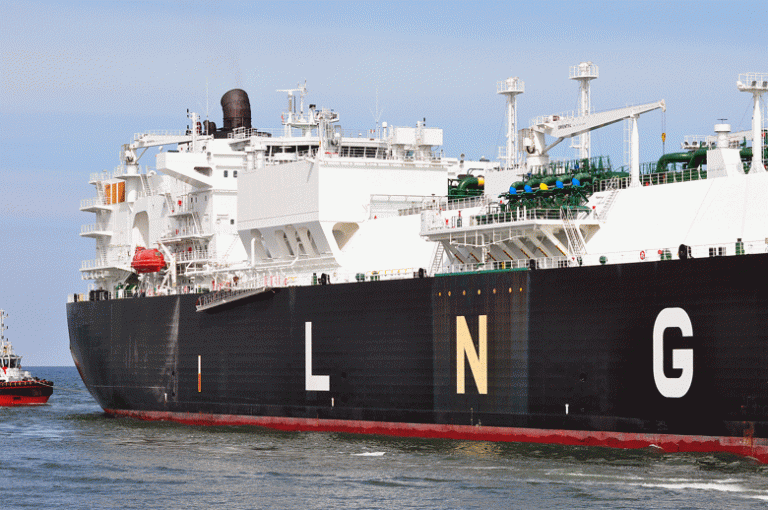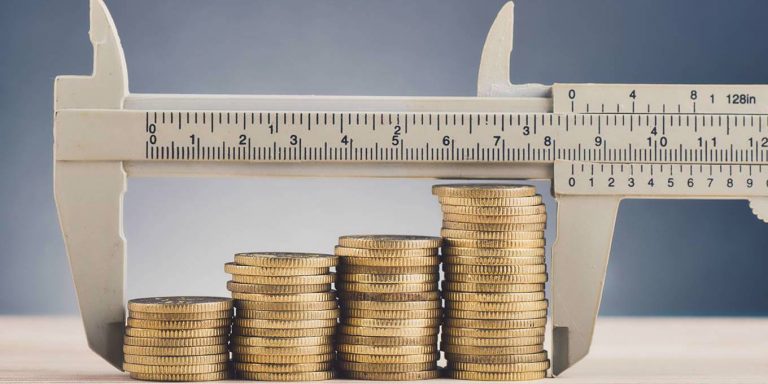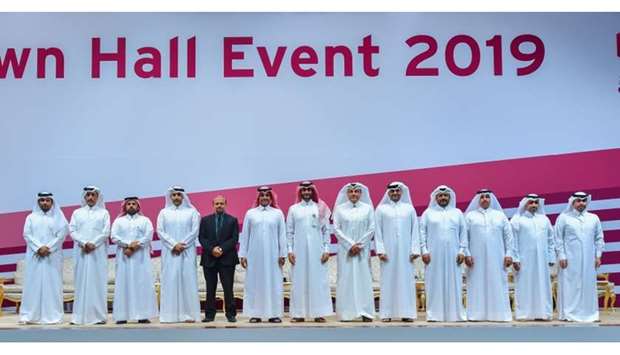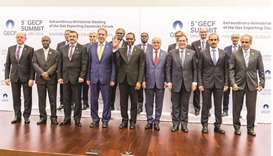Qatari-Turkish partnership an inspiring model of bilateral alliances, says al-Kuwari

HE Ali bin Ahmed al-Kuwari, Minister of Commerce and Industry, is leading Qatar’s delegation to the OIC High Level Public and Private Investment Conference, which is taking place in Istanbul from yesterday, under the theme of “Unleashing Intra-OIC Investment Opportunities: Investment for Solidarity and Development.” The conference will end today.
Qatar’s participation in the conference comes within the framework of its keenness to strengthen bilateral relations with Turkey and to bolster co-operation with OIC member states, while providing insight into the investment climate in Qatar and the opportunities that the State offers in various promising sectors.
In his remarks, al-Kuwari said the conference represented a key step towards promoting trade and investment co-operation and integration among Islamic countries.
Al-Kuwari noted that numerous international institutions have lowered their estimates for global growth for the current year, including the Organisation for Economic Cooperation and Development (OECD), which noted in its latest November 2019 report that the global economy will grow at the slowest pace since the global financial crisis at a rate of 2.9% in 2019 and an average of 2.9%-3% between 2020 and 2021.
The International Monetary Fund (IMF) also projects that over 70% of economies around the world will experience a decline in GDP growth to 3.3% in the first half of the year compared to 3.6% in 2018, al-Kuwari added.
Al-Kuwari explained that these estimates reflect delicate geostrategic and economic changes that coincided with a slowdown in multilateral trade and the negative repercussions of political uncertainties, which are leading to rising economic nationalism and protectionist measures at the global trade level, which resulted in a slowdown in various global economic sectors, especially foreign direct investments.
Al-Kuwari said the decline in investment inflows was evident across OIC Member States, noting that FDI inflows into the OIC region stood at $107.4bn in 2018, dropping by $35.6bn compared 2011. Al-Kuwari noted that this decline reflects the magnitude of the challenges faced by investors in OIC countries, particularly in terms of restrictions imposed on the transfer of profits and foreign capital. Al-Kuwari called for the adoption of a comprehensive economic strategy to encourage investment inflows and stimulate growth in a way that reflects the economic capabilities and potential of member states in a bid to achieve economic integration and promote joint Islamic action.
Touching on Qatar’s economic performance, al-Kuwari explained that the Qatari economy saw a balanced and flexible performance in the midst of these global conditions.
In this context, al-Kuwari highlighted Qatar’s efforts to support the private sector and to diversify its economy in line with the National Development Strategy 2018-2022, which aims to promote the growth of added value sectors including the industrial, financial services and tourism sectors.
Al-Kuwari highlighted that Qatar has sought to speed up the implementation of key initiatives and measures aimed at cementing the country’s position as an attractive business and investment destination.
Touching on Qatar’s legislative environment, al-Kuwari emphasised Qatar’s keenness to consolidate foreign investment-friendly laws such as the law regulating the investment of non-Qatari capital in economic activity and the Free Zones Investment law, which allow investors up to 100% ownership.
Al-Kuwari noted that Qatar is embracing a policy of economic openness to effectively engage with global markets, and build fruitful international partnerships, by capitalising on its developed infrastructure such as Hamad International Airport and Hamad Port as well as free zones and logistical and industrial areas, which represent an important incentive for foreign companies to invest in non-oil sectors to tap local markets and expand their business into new regional markets.
Al-Kuwari elaborated on the Qatari-Turkish strategic partnership, which represents an inspiring model of bilateral regional alliances.
Al-Kuwari explained that Qatar and Turkey enjoy close and friendly relations, noting that these relations reflected positively on bilateral trade, which reached about QR5.69bn, the equivalent of $1.55bn between January and September 2019.
Al-Kuwari added that the growth in bilateral trade reflects the effectiveness of Qatari-Turkish joint measures and initiatives particularly the Trade and Economic Partnership Agreement that was signed in November 2018.
Al-Kuwari noted that this agreement represents a decisive step in bolstering economic integration between Qatar and Turkey, adding that the benefits of the agreement outweigh those secured within the framework of the World Trade Organisation in terms of preferential transactions and customs exemptions for goods and services as well as the incentives it offers to investment companies in both countries.
Al-Kuwari praised Turkish companies for contributing to the growth of the Qatari economy, noting that more than 535 Qatari-Turkish joint companies are currently operating in Qatar.
Al-Kuwari concluded his remarks, noting that the purpose of his participation in the conference is to bolster joint Islamic action in line with the OIC principles and objectives, and to develop co-operation and co-ordination mechanisms among member states to promote investments and to serve the developmental orientations and aspirations of people in terms of stability and prosperity.
During its participation in the conference, the Qatari delegation showcased the most prominent laws and legislations that the State ratified to stimulate foreign direct investments, in addition to the incentives and services offered to investors to streamline the submission of investment applications and the processing of transactions, and to eliminate obstacles that may face investors with relevant authorities, which will contribute to attracting foreign direct investments and enhancing Qatar’s competitive position in the region and beyond.
The conference aims to promote investments within the framework of the OIC by reducing obstacles that impede the flow of goods, services and financing between OIC member states and adopting mechanisms that facilitate business procedures.
The conference provides a platform for public and private policymakers in OIC member states to discuss issues of common interest including innovative financing sources for the development of the private sector and the enhancement of the global value chain as well as the role of export credit agencies in mitigating trade and political risks to encourage and protect investments, in addition to the dynamics of the private sector to enhance investment flows within OIC and the role of investment promotion agencies in promoting investments within the organisation’s framework among other topics aimed at enhancing sustainable partnerships between public and private sector stakeholders in member countries and stimulating investments in the region.
The High Level Public and Private Investment Conference is organised and sponsored by Turkey, the Organisation of Islamic Cooperation and the Islamic Development Bank. The conference, which sheds light on various sectors including the trade, agricultural and infrastructure sectors, brings together 750 participants from 56 countries, including heads of states, ministers, senior officials, decision makers and business leaders.








This is hardly the only reason why GDP is an inadequate measure of human wellbeing. It also ignores people’s need for respect, dignity, liberty, health, rule of law, community, and a clean environment. But even if all of these other democratic “goods” were satisfied, GDP still would fail as a metric of progress, purely in terms of income alone.
Building on work by the economists Thomas Piketty, Emmanuel Saez, and Gabriel Zucman, the Center for Equitable Growth has proposed “GDP 2.0,” a metric that would complement existing aggregate GDP reports by disaggregating the income growth of different cross sections of the population (such as income quintiles). Providing this kind of distributional picture regularly would require increased coordination among government departments, as well as some conventions on, for example, how to use tax data to complement the usual national accounts. But conventions are also needed for existing national income accounting.
Provided that distributional data are routinely available, one could compute a growth rate based on the weighted average across each decile of the income distribution, with equal weighting for population, as in the example above. Individuals would still be weighed by their incomes within each group (which is why it would be preferable to use deciles rather than quintiles), but the final product would be much closer than current methods to the “democratic” ideal.
One of the main advantages of GDP growth is that it is expressed with a single number, whereas other performance indicators either are presented within dashboards comprising multiple metrics or aggregated in essentially arbitrary ways. The implicit use of income shares as aggregation weights is perfectly appropriate for macroeconomic analysis and is not arbitrary. The problem arises when GDP becomes a proxy for progress. What we can measure easily and communicate elegantly inevitably determines what we will focus on as a matter of policy. As the Stiglitz-Sen-Fitoussi report put it, “What we measure affects what we do.”
Publishing a democratic metric like the growth rate of GDP 2.0 is no pipedream. A GDP growth rate using equal weights for each decile of the population would also produce a single number to complement the usual growth rate. True, it still would not capture the substantial differences within the top decile in many countries where the top 1% have been gaining disproportionately compared to everyone else. And we still would need other metrics to measure performance in dimensions other than income. But as a single figure published alongside GDP growth, it could go a long way toward changing the dominant conversation about economic performance.